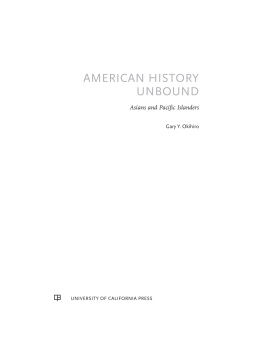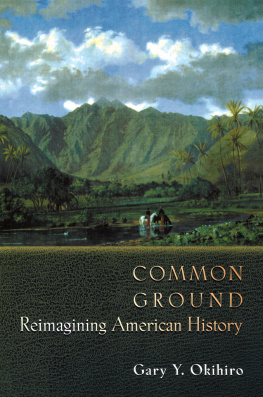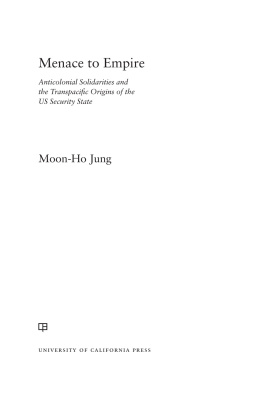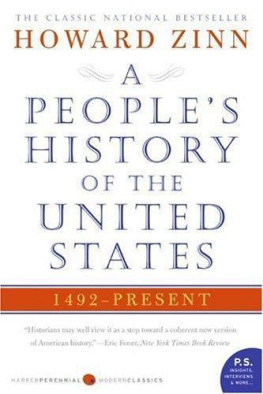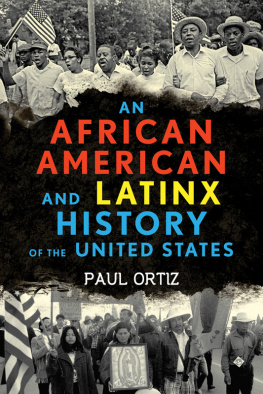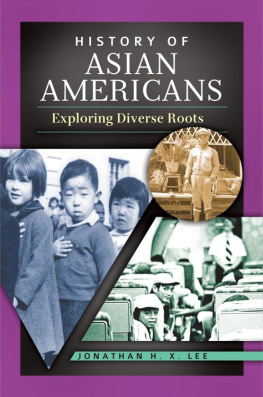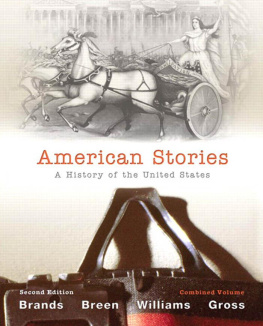ACKNOWLEDGMENTS
I was dragged kicking and screaming into writing this textbook. An editor at a commercial house invited me, on the recommendation of a colleague, to write a more up-to-date alternative to the most commonly adopted books for courses in Asian American history. It was January 2010, and her invitation reminded me of a Cornell colleagues advice never to write a textbook except for the money. Historians, she pointed out, receive scant scholarly notice for derivative works like textbooks, and publishers make constant and insistent demands to write and revise the work in response to readers reactions in order to increase classroom adoptions and sales. I have yet to appreciate fully my colleagues sage warning.
I submitted a book proposal in March 2010, and by the following month the editor had secured five anonymous reviews of the proposal. The speed was amazing, familiar as I was with academic presses that customarily moved at a snails pace. There was strong agreement on the need for an up-to-date book despite a lingering fondness for the standard texts by Ronald Takaki and Sucheng Chan, she reported, and in May 2010, I received a book contract. By July 2011, I had completed ten chapters, about three-fourths of the manuscript, when the editor relayed to me the shocking news about the sale of her company and cancellation of all history book contracts, including mine.
Bereft of a publishing home, I wrote Niels Hooper, my editor at the University of California Press. Niels had already published two parts of my trilogy on space/time, Island World (2008) and Pineapple Culture (2009), and he encouraged me to submit the textbook to UC Press. The timing was perfect, he reassured me. I am truly grateful to Niels and UC Press for providing a welcoming and congenial home for this work.
I am also extremely grateful to the anonymous reviewers from the commercial publisher and UC Press who encouraged me and provided helpful criticisms and suggestions. I am proud to acknowledge my former student, Moon-Ho Jung, who provided his usual meticulous, well-considered reading of one of the many iterations of my ponderous manuscript. For a similar act of collegial generosity, I also stand in awe of the faculty reviewer on the advisory board of UC Press who provided thoughtful advice that could only have come from a careful reading of some seven hundred manuscript pages.
Generations of students have played central roles in the writing of this textbook. When first I taught U.S. history, primarily white students challenged my presumption to teach their nations history; their racism enraged me but kept me on my toes. Now, nearly forty years later, I offer no apologies for having written American History Unbound. Asian and Pacific Islander students have provided me with other challenges. Most insisted on their inclusion in my accounts as Chamorros, Chinese, Filipinos, Hawaiians, Japanese, Koreans, South Asians, Vietnamese, and so forth. A few declared interest only in their groups of birth and blood: they had, they said, no affiliations with other Asians or Pacific Islanders, much less other peoples of color in the United States or the third world. All of those students have influenced the writing of this historical narrative, and I gratefully acknowledge my debt to them.
I hold in great admiration the work of my colleagues Ronald Takaki and Sucheng Chan, both renowned scholars who have been hugely influential in the field of Asian American studies and U.S. history more broadly. Their textbooks, published in 1989 and 1991, not only legitimated the emerging field of Asian American studies and helped to define it but also are foundational to the claim that Asians have histories in the United States and are indispensable subjects of the nation-state.
Numerous archivists and colleagues have helped me secure images and obtain rights to reproduce the illustrations in this textbook. Deserving of special mention are Jenn Delgado and Terrie Albano, Peoples World; Layce Johnson, Idaho State Historical Society; Marcia Kemble and Brian Niiya, Japanese Cultural Center of Hawaii; Kenneth Klein, Korean American Digital Archive, University of Southern California Libraries; Sang-Hyop Lee and Michael E. Macmillan, Center for Korean Studies, University of Hawaii at Mnoa; Karen Leonard, University of California, Irvine; Samip Mallick, South Asian American Digital Archive; Jessica Miller, Archives of Michigan; Catherine Powell, Labor Archives and Research Center, San Francisco State University; Barbra Ramos, UCLA Asian American Studies Center; Melissa Shimonishi, Hawaii State Archives; Vanessa Tait and Adnan Malik, Doe Library, University of California, Berkeley; Woody Vaspra, World Council of Elders; Priscilla Wegars, Asian American Comparative Collection, University of Idaho; Tami Winston, Photo Resource of Hawaii; and Nicola Woods, Royal Ontario Museum, Toronto, Canada. I am grateful for their efficient attention and, above all, their kind courtesy.
Carolyn Bond, my developmental editor, has been my steadfast companion on the excruciatingly long journey from draft to book. We did not always agree, but her keen eye and candid appraisal have sharpened my thinking and clarified my writing. I owe her a great debt of gratitude for foregrounding the concept of ocean worlds, which is now the basis of a key chapter in this work. Erika Bky has been more than a copyeditor; she has saved me from numerous errors of fact and instances of careless writing.
On a personal note, for as long as we have known each other, my wife, Marina A. Henrquez, has been my partner and comrade in my lifes work, and that solidarity has strengthened my purpose and resolve.
Like all survey texts, this history relies on the work of scores of scholars, activists, and collectors who left behind writings, oral histories, photographs, tapestries, stones, and documents of all sorts. Secondary studies of virtually all aspects of the lives of Asians and Pacific Islanders, despite gaps, have filled rows upon rows of sagging bookshelves. Taken together, those guides enable us to apprehend our condition and decipher the thoughts and deeds of our forebears. We should remember their gifts with gratitude, and, when possible, commemorate their names. We find ourselves in those articles of our constitution as individuals and as members of collective communities. Such histories liberate and shake foundations from generation to generation.

